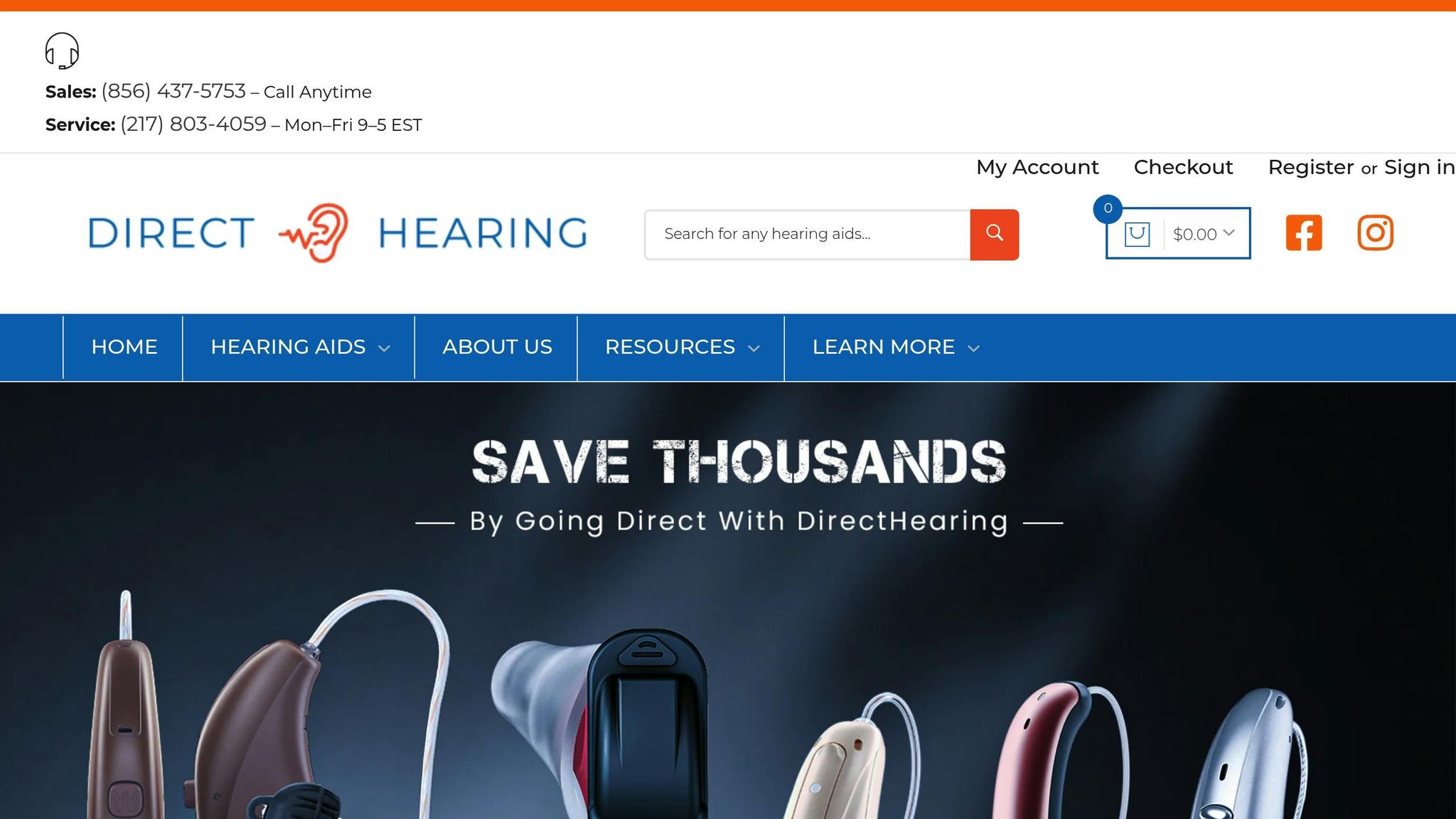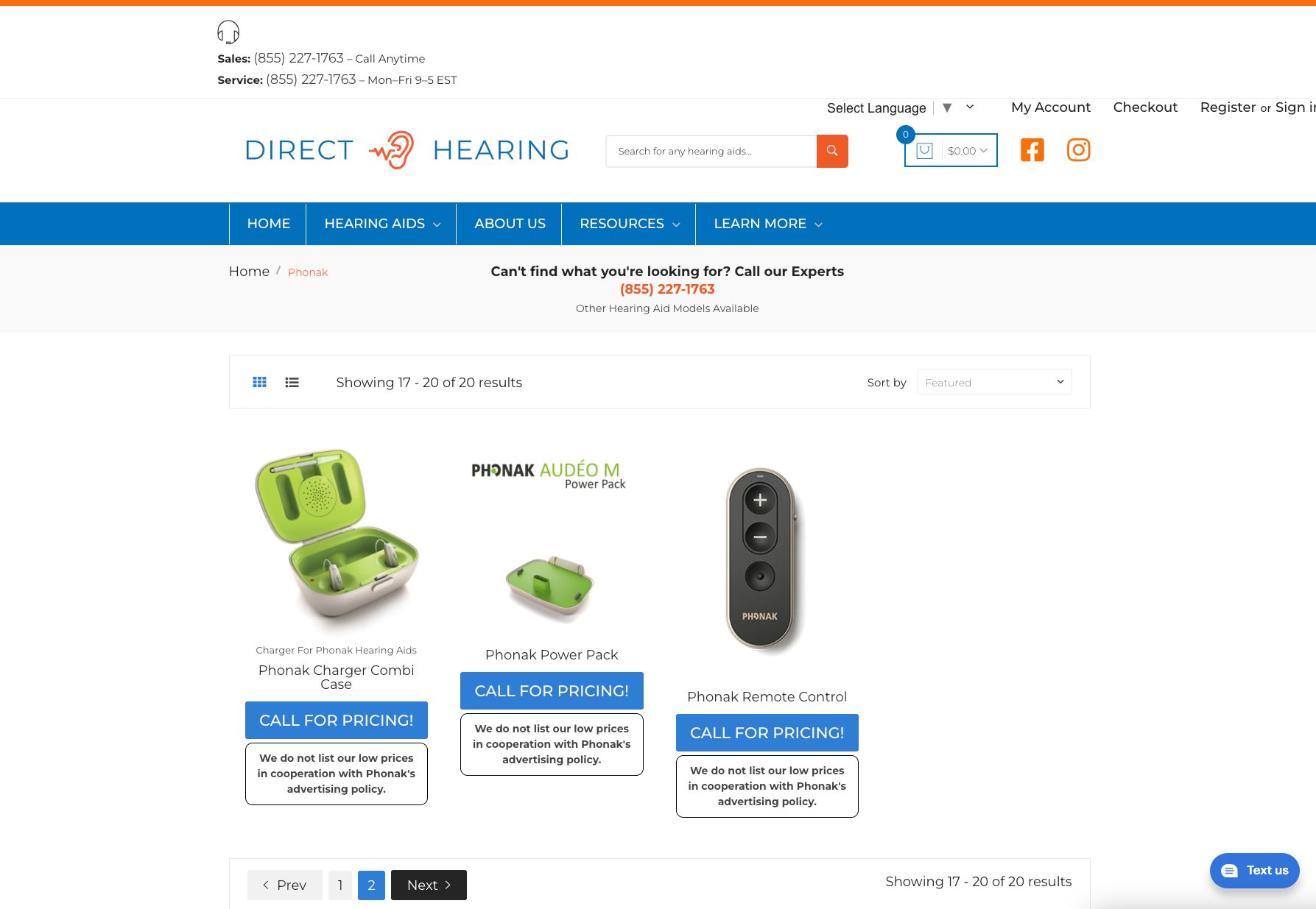
Remote programming for Phonak hearing aids allows professionals to adjust your hearing aids digitally, saving you time and making care more accessible. Using the myPhonak app and Bluetooth®, you can connect with your audiologist for real-time adjustments without visiting a clinic. This is especially helpful for users with busy schedules, mobility challenges, or those living far from care facilities.
Key Features:
Limitations:
Remote programming ensures your hearing aids stay optimized while reducing the need for frequent clinic visits. However, it works best alongside occasional in-person care to maintain overall hearing health.
Now that you're familiar with which Phonak models support remote programming, let's walk through the steps to get everything ready. With the right equipment and a few straightforward actions, you'll be set for seamless remote sessions.
To get started, you'll need these essentials:
| Component | Requirement |
|---|---|
| Hearing Aids | Phonak model with Bluetooth® support |
| Mobile Device | Smartphone or tablet (iOS® or Android™) with Bluetooth® |
| App | myPhonak app (free download) |
| Internet | Stable Wi-Fi or mobile data connection |
Start by having your hearing aids professionally configured with Phonak Target software and a Noahlink Wireless device to enable Remote Support [1].
Next, download and install the myPhonak app on your mobile device. Follow the app's instructions to pair your hearing aids via Bluetooth®. Once paired, test the connection by adjusting the volume or switching programs within the app. If these features work as expected, you're all set for remote programming.
Once your setup is complete, you're ready to connect with your hearing care professional remotely. Here's a step-by-step guide to help you navigate the process and make the most of remote programming.
Schedule your session ahead of time with your hearing care professional. They'll give you a specific appointment time and any additional instructions to ensure everything runs smoothly. This preparation helps both you and your audiologist stay on track.
When the scheduled time arrives, open the myPhonak app on your mobile device. Navigate to the main menu and find the remote support option.
Tap "START A SESSION" to begin. Then, select "Start Remote Support" to establish a connection with your audiologist. The app will confirm your connection and check that your hearing aids are properly linked.
Tap "Join Waiting Room" to enter a virtual queue. Your hearing care professional will connect with you through the app when they're ready, and the session will begin with real-time adjustments to your hearing aids.
During the session, your audiologist can access your hearing aids' settings in real time. They'll guide you through the process, explaining the changes they’re making and asking for your input on how things sound.
Adjustments can include volume changes, frequency tweaks, and program fine-tuning - all while you're wearing your hearing aids. This back-and-forth communication ensures the settings are tailored to your needs. Once adjustments are complete, the new configurations are saved directly to your hearing aids, so you can experience the changes instantly.
Even with a smooth setup, occasional issues can arise. Here’s how to address some common problems:
Remote programming is great for making real-time adjustments to your hearing aids, but it doesn’t replace the need for in-person care. It works best as a complement to the setup and usage instructions you’ve already received.
With the myPhonak app, your audiologist can tweak your hearing aid settings in real time. This includes adjusting volume, fine-tuning frequency responses, and customizing listening programs for specific environments. They can also make changes to help you better handle background noise or environmental sounds.
Another handy feature? The app keeps a history of your settings. This allows your audiologist to track what works best for you, ensuring continuity between sessions and helping guide future adjustments.
While remote programming is advanced, it has its limits. It can’t fix physical hardware problems like cracked casings, damaged ports, or broken wires. Issues like these require hands-on repair or replacement.
Remote programming also doesn’t replace comprehensive hearing evaluations. While your audiologist can make adjustments based on your feedback, detailed audiometric testing and hearing threshold measurements require specialized equipment in a controlled setting.
Maintenance tasks like cleaning your hearing aids - removing wax, clearing moisture, or replacing parts - can’t be done remotely either. Similarly, your audiologist can’t examine your ears for wax buildup, irritation, or other issues that might affect your hearing aids’ performance.
Complex troubleshooting is another area where remote programming falls short. If your hearing aids are acting up inconsistently - like working one moment and not the next - or producing unusual sounds, your audiologist may need to inspect them in person with professional tools.
There are times when remote adjustments just won’t cut it, and an in-person consultation becomes necessary.
While remote programming is a powerful tool, it works best alongside in-person care. Both approaches together ensure you get the best possible support for your hearing needs.

Direct Hearing specializes in Phonak hearing aids and provides expert assistance to help users make the most of remote programming. Their team ensures a hassle-free experience by guiding users through setup and troubleshooting.
The team at Direct Hearing helps install and configure the Phonak Target software, streamlining remote sessions. They also assist in enabling remote programming through the compatible phone app.
For instance, gpbelton shared that after Direct Hearing configured his Phonak Target software, a computer crash required reinstallation. The team recommended adding a Noahlink Wireless device to maintain access to remote support.
This example highlights how Direct Hearing adapts to unexpected challenges, offering tailored advice like recommending additional equipment to ensure uninterrupted support. Their expertise covers various hearing aid models and accessories, ensuring personalized solutions.

Direct Hearing offers a range of Phonak hearing aids, including the Audéo Lumity L90 and Slim L90 models. They also provide essential accessories like connectivity devices and programming cables, which are crucial for smooth remote programming sessions.
Their team is committed to helping users find the right fit by offering personalized recommendations based on hearing test results and individual lifestyle needs. This ensures that users receive hearing aids optimized for their remote programming requirements.
In addition to technical support and product variety, Direct Hearing focuses on affordability. They offer competitive pricing, a 45-day risk-free trial, a best price guarantee, and warranty coverage. These benefits make advanced hearing solutions more accessible while supporting seamless remote programming. Their comprehensive services reflect a commitment to providing convenient and effective care for users.
Remote programming for Phonak hearing aids brings expert care straight to your home, allowing for digital adjustments without the hassle of frequent clinic visits - all while maintaining top-notch care.
A 2022 Hearing Tracker survey revealed that over 60% of users found remote programming just as effective as in-person appointments. Additionally, reports indicate teleaudiology services, including remote programming, have seen a surge in popularity, with some clinics noting a 30-50% increase in remote appointments compared to pre-pandemic times. This growing demand highlights how much people value the convenience and flexibility that remote hearing care offers.
That said, remote programming works best as part of a broader care plan. It’s particularly useful for routine adjustments, fine-tuning, and ongoing support to ensure hearing aids stay in peak condition.
With the right setup, a stable internet connection, and compatible devices, remote programming offers a practical and accessible way to receive professional audiological care whenever you need it. It’s a solution that makes hearing care more convenient and responsive than ever.
To determine whether your Phonak hearing aids support remote programming, look for Bluetooth connectivity and remote support capabilities. You can usually find this information in your product manual or confirm it with your hearing care professional during the fitting process.
If you're uncertain, contact your provider for guidance or review the documentation that came with your hearing aids for a detailed compatibility breakdown.
If your Phonak hearing aids disconnect during remote programming, the first step is to verify that your internet connection is stable and strong. Also, ensure that your smartphone or computer is within the recommended range of your hearing aids. Restart both your hearing aids and the connected device, then attempt to re-pair them.
Double-check that your hearing aids and any related apps are running the latest software version. If the problem persists, try uninstalling and reinstalling the app. For further assistance, refer to your hearing aid provider or consult the user manual for detailed troubleshooting steps.
When your Phonak hearing aids need precise adjustments, thorough diagnostics, or their initial fitting and calibration, an in-person visit is often the best choice. These tasks typically require the hands-on expertise of a professional, which can't always be achieved remotely.
If you're dealing with persistent issues, discomfort, or problems that haven't been resolved through remote support, an in-person appointment can provide a tailored approach to address your concerns. This ensures your devices are fine-tuned to deliver the best fit, comfort, and performance for your hearing needs.